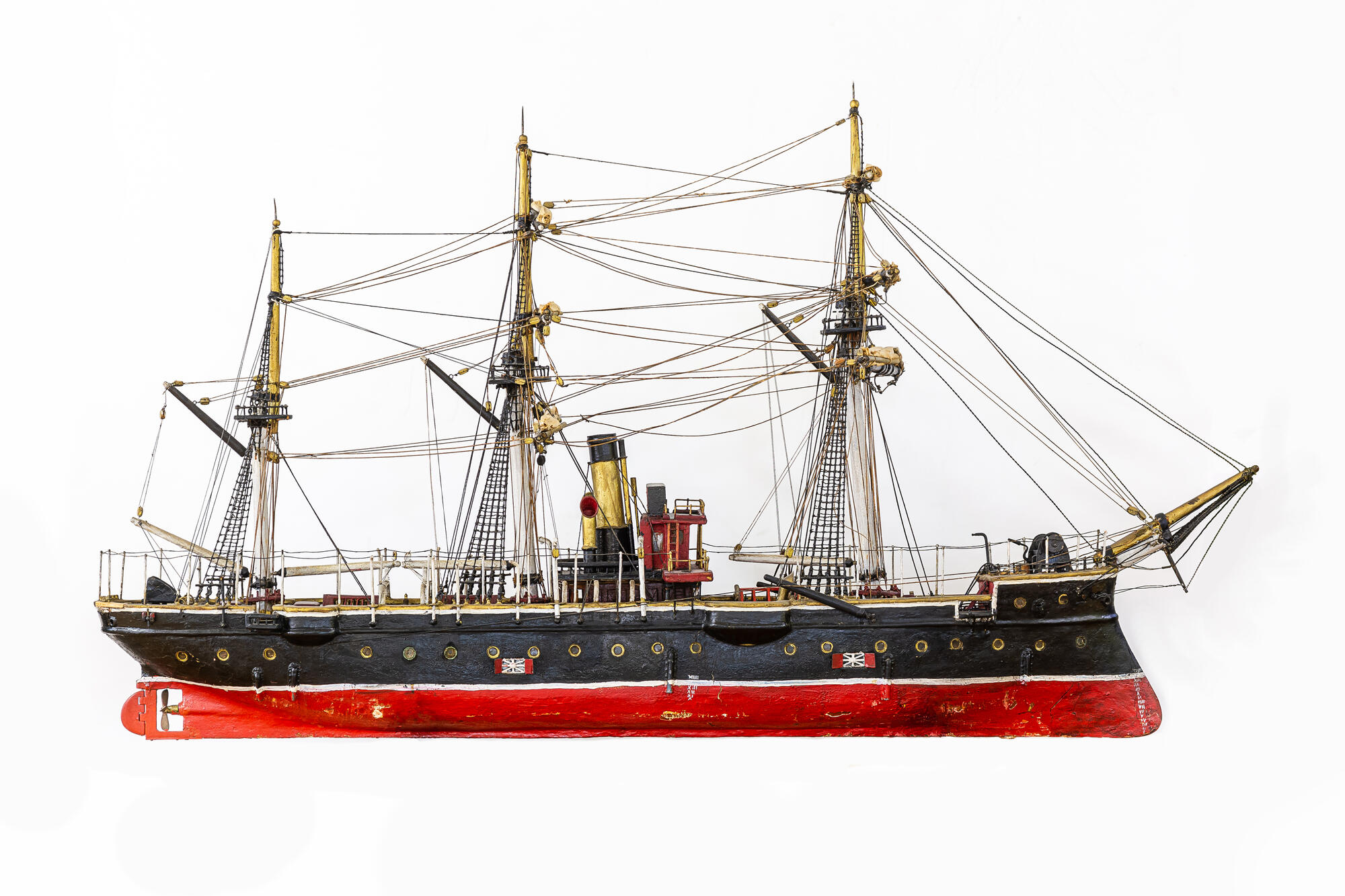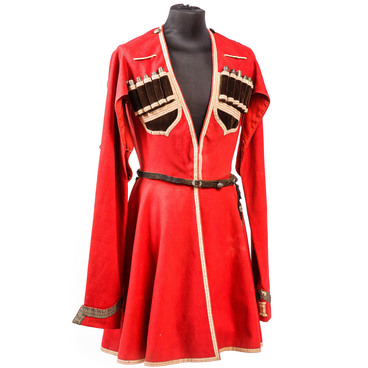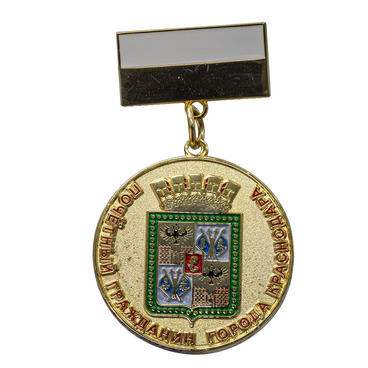A model of the wind- and propeller-driven cruiser ‘To the Memory of Mercury’ is on display in the Felitsyn Museum as part of the ‘Marine Kaleidoscope’ exhibition. A resident of the city Georgiy Multykh made the ship from wood, glass, and metal in the early twentieth century.
In 1829, the brig ‘Mercury’ participated in one of the Russo-Turkish wars under the command of Lieutenant-Commander Alexander Kazarsky. Two Turkish battleships, ‘Selimiye’ and ‘Real-Bay’, attacked the brig at once. However, ‘Mercury’ managed not only to fight them off but also to win.
Emperor Nicholas I ordered the Russian Navy to have a ship named ‘To the Memory of Mercury’ forever in memory of this feat. If the old ship were to be decommissioned, its name was given to a new one.
The wind- and propeller-driven ‘To the Memory of Mercury’, the model of which was created by Georgiy Multykh, was built in 1880. The vessel was commissioned by the Russian Navy and built in France, in the city of Toulon. At that time, the ship was called ‘Yaroslavl’. In 1882 the cruiser was enlisted into the Black Sea Fleet and was renamed ‘To the Memory of Mercury’. For a long time, this ship was the only cruiser and the fastest ship in the Black Sea. In 1907, ‘To the Memory of Mercury’ was excluded from the fleet and mothballed in the port of Sevastopol.
Georgiy Multykh first served on a cruiser as a sailor. Then he had an injury, hurt the fingers on his left hand, and became a clerk. That is when Multykh began working on the model. He carved it for 15 months, from May 1900 to August 1901. The artisan did almost all the work with one hand. For this model, he received the highest award and personal thanks of Grand Duke Alexei Alexandrovich.
After his service, Georgiy Multykh returned to his native Ekaterinodar (today — Krasnodar). There he presented the model to Mikhail Babich, the appointed ataman of the Kuban Cossack Host. In his turn, the new owner gave it to the Kuban Host Ethnographic and Natural-Historical Museum, which then became the museum-reserve named after E. D. Felitsyn.
The model has not been fully preserved to the present day. Three miniature models of artillery guns and two flags — on the bow and mizzen mast, have been lost. And a metal railing is missing on the stern.
In 1829, the brig ‘Mercury’ participated in one of the Russo-Turkish wars under the command of Lieutenant-Commander Alexander Kazarsky. Two Turkish battleships, ‘Selimiye’ and ‘Real-Bay’, attacked the brig at once. However, ‘Mercury’ managed not only to fight them off but also to win.
Emperor Nicholas I ordered the Russian Navy to have a ship named ‘To the Memory of Mercury’ forever in memory of this feat. If the old ship were to be decommissioned, its name was given to a new one.
The wind- and propeller-driven ‘To the Memory of Mercury’, the model of which was created by Georgiy Multykh, was built in 1880. The vessel was commissioned by the Russian Navy and built in France, in the city of Toulon. At that time, the ship was called ‘Yaroslavl’. In 1882 the cruiser was enlisted into the Black Sea Fleet and was renamed ‘To the Memory of Mercury’. For a long time, this ship was the only cruiser and the fastest ship in the Black Sea. In 1907, ‘To the Memory of Mercury’ was excluded from the fleet and mothballed in the port of Sevastopol.
Georgiy Multykh first served on a cruiser as a sailor. Then he had an injury, hurt the fingers on his left hand, and became a clerk. That is when Multykh began working on the model. He carved it for 15 months, from May 1900 to August 1901. The artisan did almost all the work with one hand. For this model, he received the highest award and personal thanks of Grand Duke Alexei Alexandrovich.
After his service, Georgiy Multykh returned to his native Ekaterinodar (today — Krasnodar). There he presented the model to Mikhail Babich, the appointed ataman of the Kuban Cossack Host. In his turn, the new owner gave it to the Kuban Host Ethnographic and Natural-Historical Museum, which then became the museum-reserve named after E. D. Felitsyn.
The model has not been fully preserved to the present day. Three miniature models of artillery guns and two flags — on the bow and mizzen mast, have been lost. And a metal railing is missing on the stern.



